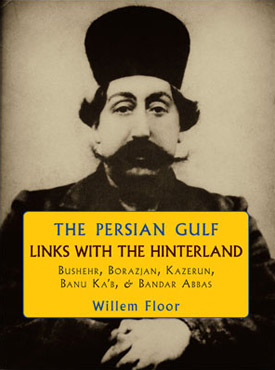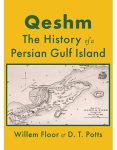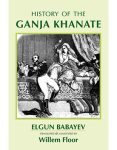About the Book
Links with the Hinterland focuses on two related themes: the importance of what goes on in a port city’s hinterland, and, the importance of a safe and secure road that connects a port city to its markets.
What happened in the port of Bushehr was influenced by events in nearby towns such as Borazjan and Kazerun, and far off provinces such as Khuzestan, as well as by the actions of local chiefs controlling the land adjacent to the trade route. The histories of Borazjan and Kazerun show the importance of the behavior of local chiefs and of migrating tribes in keeping the caravan route secure or not. A breakdown of the port city’s authority over its hinterland, in particular the trade route, impacted on its well-being both financially and politically. Likewise, the history of the Banu Ka`b in Khuzestan shows how the takeover of tribal leadership by a more commercially oriented lineage led to the rise of a rival port to Bushehr that ultimately would oust it from its leading position.
The description of the commercial route between Bandar Abbas and Isfahan, during the Safavid period, highlights the importance of road infrastructure in linking a seaport with the markets in its hinterland. The ports in the Persian Gulf were but caravan termini. The ports themselves did not constitute a major market for imports; the real market for these goods was in the interior of Iran and, therefore, the road linking the port and its markets was a lifeline for both. This study makes clear that what happened along that road, connecting the terminus and the market, determined to a great extent how much volume was shipped and at what cost. Finally, Links with the Hinterland also demonstrates how the attacks on mainly British-owned goods on the Bandar Abbas–Isfahan road bestowed a hue of nationalist resistance to the robber chiefs during
About the Author
Willem Floor studied development economics and non-western sociology, as well as Persian, Arabic and Islamology from 1963-67 at the University of Utrecht (the Netherlands). He received his doctoral degree from the University of Leiden in 1971. Since 1983, Dr. Floor was employed by the World Bank as an energy specialist, however, after his retirement in 2002, he has dedicated his time to the study of the social and political history of Iran, and has published extensively throughout this time. His books include: Public Health in Qajar Iran, Agriculture in Qajar Iran, and The History of Theater in Iran, as well as, The Persian Gulf: A Political and Economic History of 5 Port Cities, 1500-1730, its second volume, Persian Gulf: The Rise of the Gulf Arabs, 1747-1792, third volume, The Rise and Fall of Bandar-e Lengeh, the fourth volume, Bandar Abbas: The Natural Gateway of Southeast Iran, and the fifth volume, The Persian Gulf: Links with the Hinterland Bushehr, Borazjan, Kazerun, Banu Ka’b, & Bandar Abbas, The Persian Gulf: The Hula Arabs of The Shibkuh Coast of Iran, and The Persian Gulf: Dutch-Omani Relations A Commercial & Political History 1651-1806, and The Persian Gulf: Muscat – City, Society and Trade . He has also published, Travels Through Northern Persia, 1770-1774, Titles and Emoluments in Safavid Iran, and A Social History of Sexual Relations in Iran; Labor and Industry in Iran, 1850-1941; Guilds, Merchants and Ulama in 19th Century Iran; The Rise and Fall of Nader Shah; Games Persians Play, and History of Bread in Iran. His translations include: Samuel Gottlieb Gmelin’s Travels Through Northern Persia 1770–1774 , and with Hasan Javadi, Abbas Qoli Aqa Bakikhanov’s The Heavenly Rose-Garden: A History of Shirvan & Daghestan; Evliya Chelebi’s Travels in Iran and the Caucasus, 1647 and 1654; A Man of Two Worlds: Pedros Bedik in Iran, 1670–1675, and Awake: A Moslem Woman’s Rare Memoir of Her Life and Partnership with the Editor of Molla Nasreddin, the Most Influential Satirical Journal of the Caucasus and Iran, 1907–1931
Willem Floor was invited to Tehran in February, 2017 and presented with the Farabi International Prize for Humanitarian Studies.








